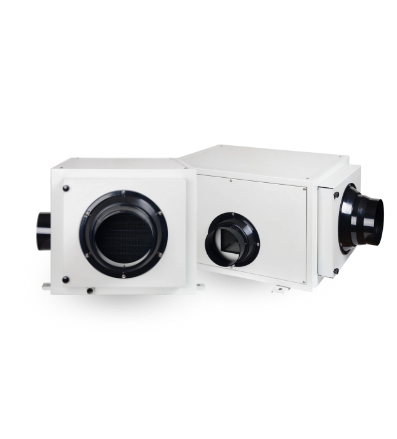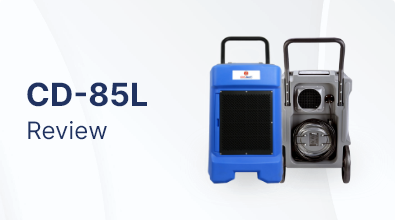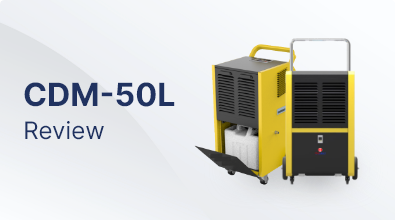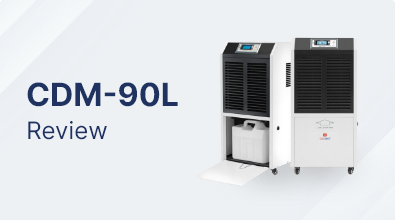Introduction.
Indoor pools are often categorized as a spot for relaxing and relishing, which can turn the tables quickly and become a taxing proposition, if effective measures to control and regulate humidity levels inside the arena are not taken.
Redundant moisture levels inside pool settings can have a number of detrimental effects, such as compromise of pool water hygiene, slippery floors, high electricity bills, peeling paints, condensation on surfaces, structural disfigurement, etc.
Indoor swimming pools are often enclosed arenas, and typically have a higher accumulation of moisture due to the continuous evaporation that takes place from the pool surfaces, backed by the reduced airflow of fresh air into the vicinity.
This can also lead to severe health hazards to the occupants, and pave the way towards issues such as difficulty in breathing, allergies, irritation, etc.
To diminish these hazards, CtrlTech has launched SPD-136L ducted swimming pool dehumidifier for swimming... pool environments, which is an aesthetically designed unit to regulate and moderate humidity levels in pool settlements.
Inline dehumidifiers are commonly found in pool rooms and basements, offering superior performance compared to portable units. This larger capacity duct dehumidification system, sometimes referred to as whole-house dehumidifiers, effectively address the humidity concerns of spacious areas.
Alternatively, ducted units make an excellent choice for environments where maintaining internal pool aesthetics and decorum is crucial. This gets more significant when the installation comes down to commercial hotel pools and recreational centers such as gyms, spas, etc.
In this comprehensive guide, we delve into the intricacies of duct type dehumidifiers, highlighting their remarkable advantages and installation options.
Read more
Automatic operation and reduced maintenance.
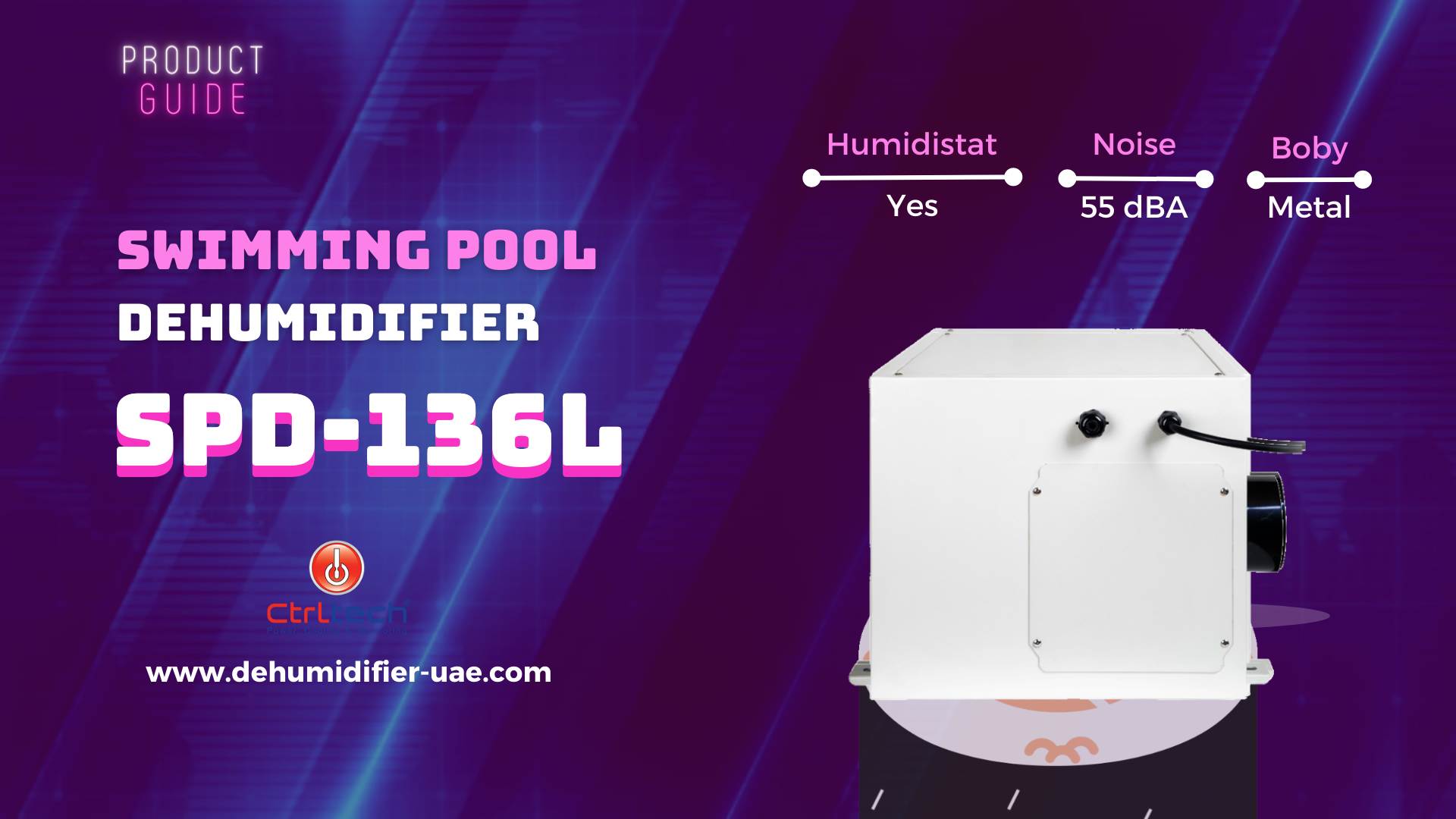
One of the notable features of SPD-136L indoor pool dehumidifier is their fully automatic operation, requiring minimal maintenance once installed. Unlike portable units, these systems efficiently regulate humidity levels in large spaces without the need for daily monitoring. For single-room applications, however, a mobile dehumidifier can suffice.
Components and functionality.
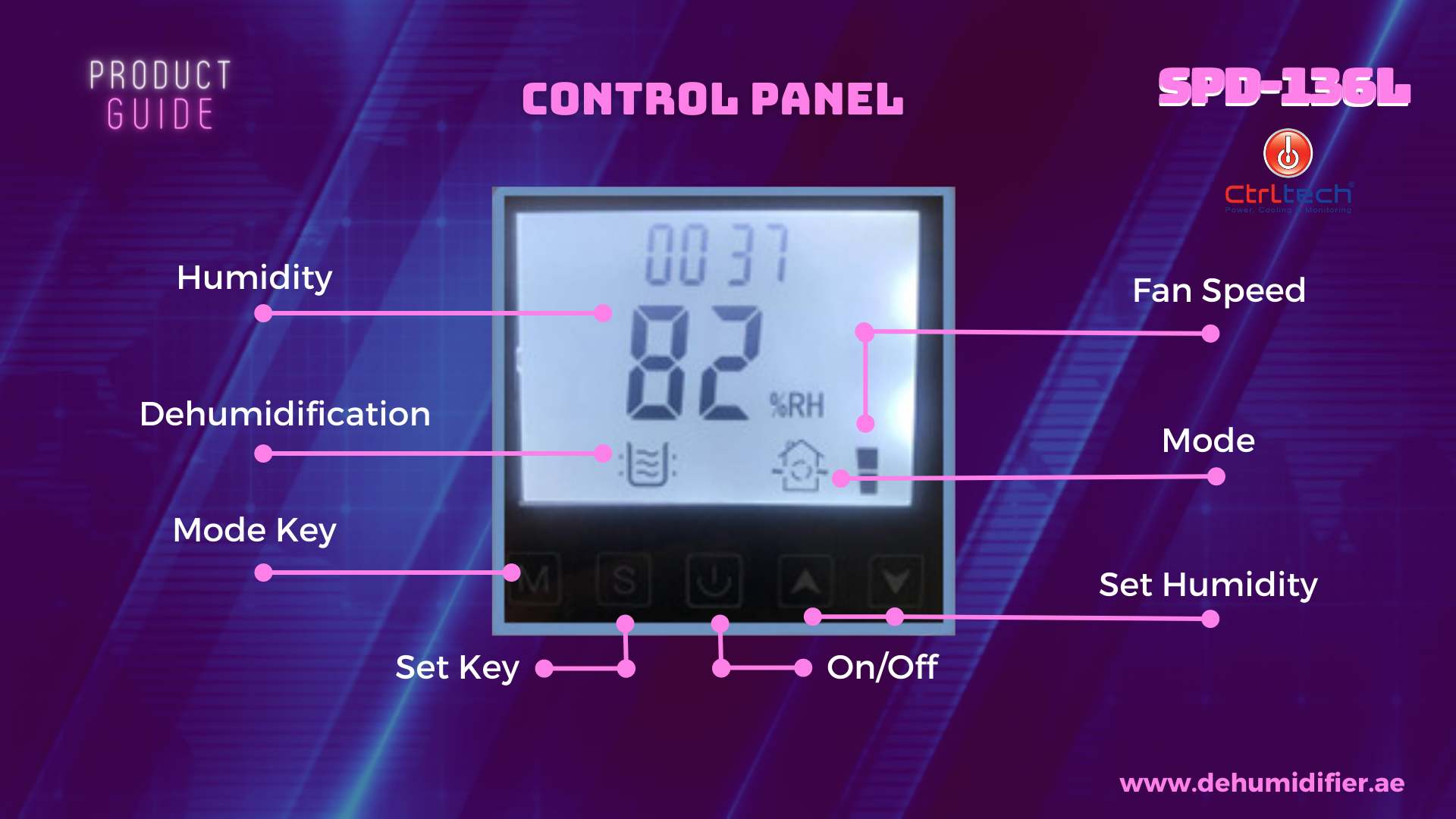
A dehumidifier for ductwork typically comprises a main unit and a controller, commonly wall-mounted or sometimes using a ducted probe controller. The controller allows users to toggle the unit on or off and adjust various parameters. The main system consists of coils and compressors responsible for the dehumidification process, effectively removing moisture from the air.
Enhanced air quality.
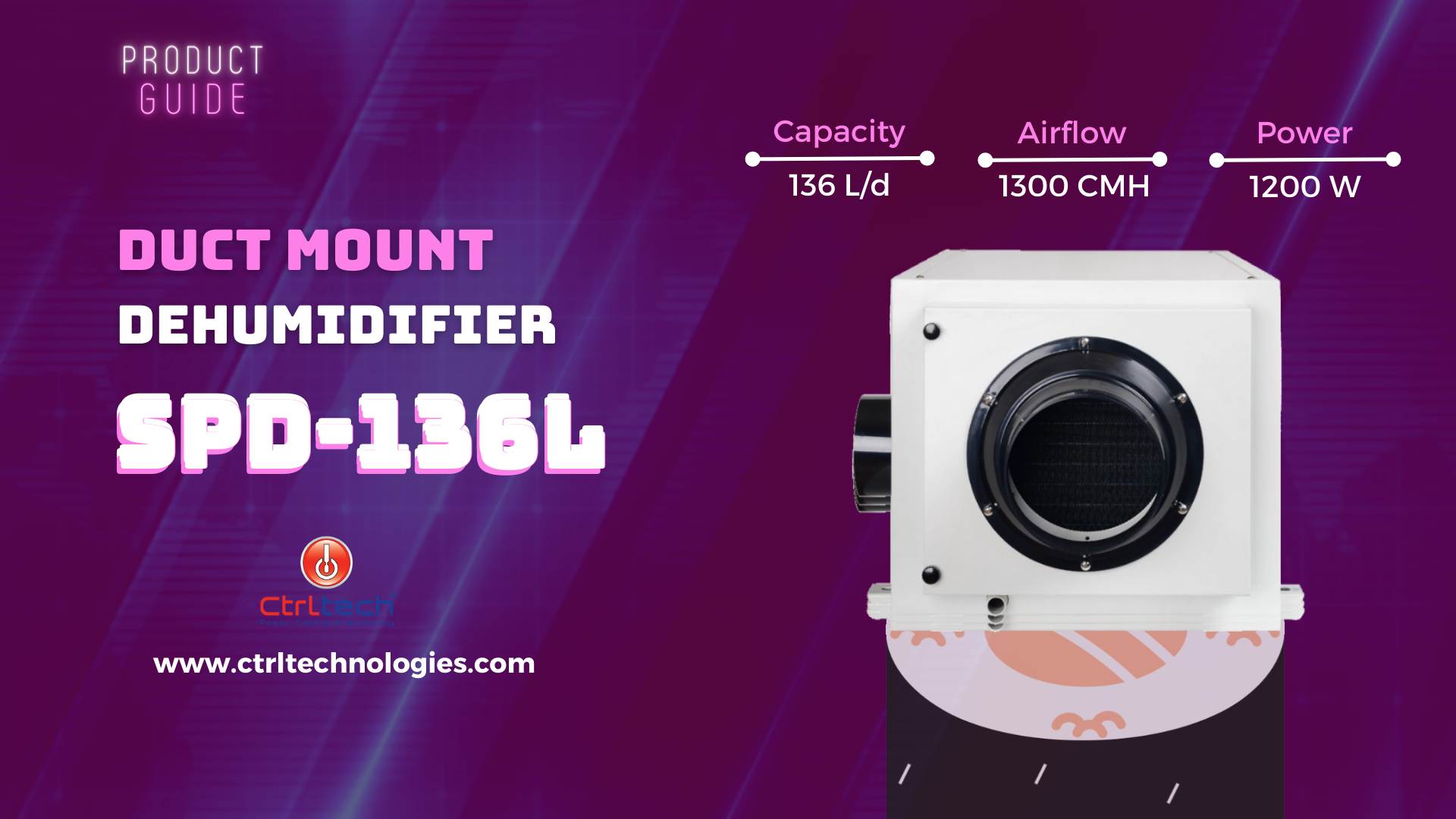
Equipped with an inlet duct and a filter, the duct air dryer also acts as a basic air purifier. The inclusion of a filter ensures the circulation of cleaner air, contributing to improved indoor air quality. This added benefit further strengthens the advantages of duct-mounted dehumidifiers over portable alternatives.
SPD-136L dehumidifier for swimming pools - Merits summarized.
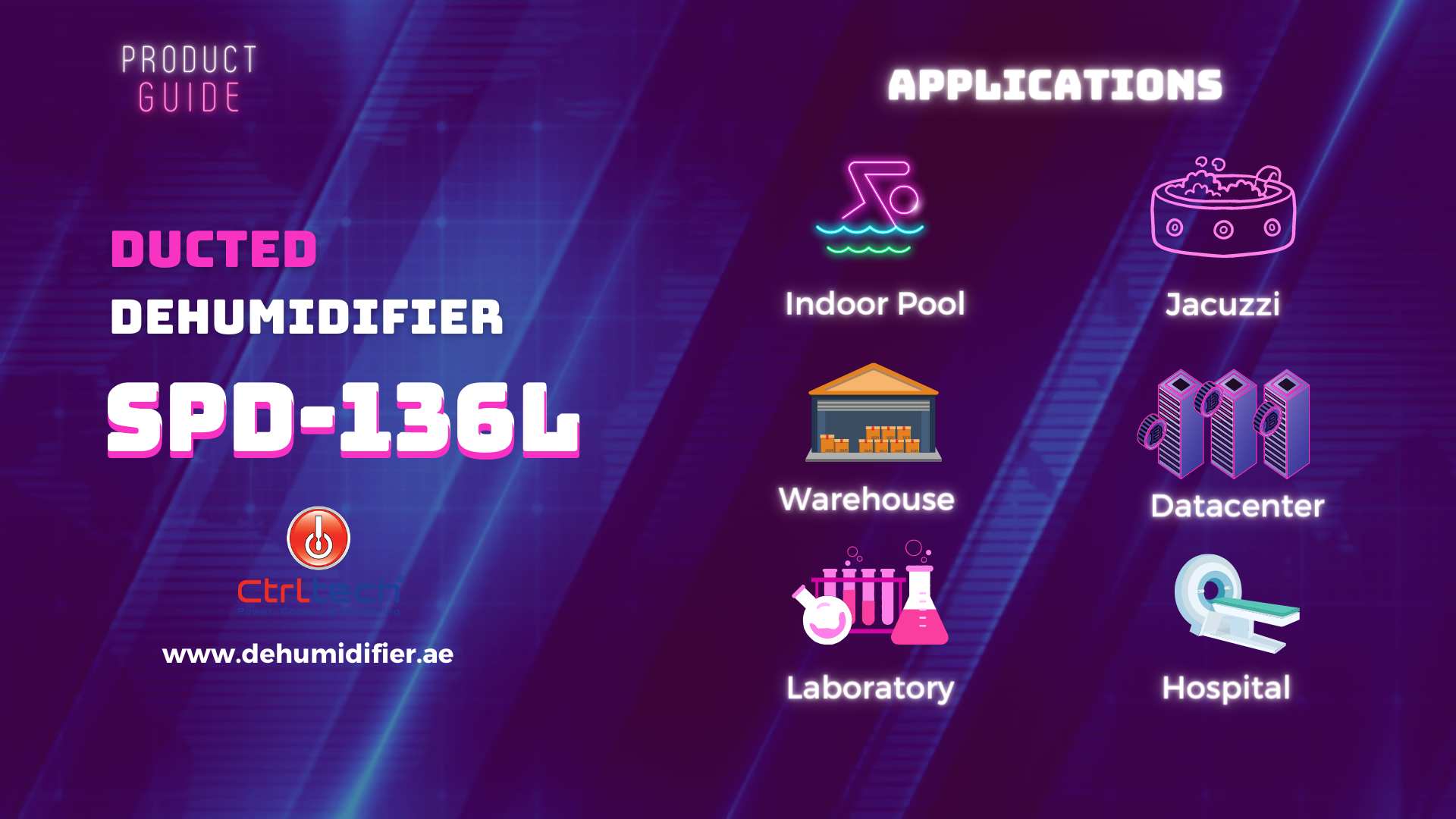
SPD-136L dehumidifier for indoor pool rooms boasts an array of benefits, besides optimizing moisture levels in enclosed indoor pool structures.
Swimming pool settlements are prone to continuous moisture generation, primarily due to the large volume of evaporation that takes place from the surface of the pool waters. ..
Requiring advanced and heavy-grade machinery to keep a constant check on humidity levels and regulate it, let us have a quick look at the benefits that SPD-136L provides.
Increased capacity and space efficiency: In line dehumidifiers provide higher capacity options, featuring larger compressors and coils. These units can handle up to 1200 liters of moisture per day while maintaining a relatively compact physical size compared to portable units.
Additionally, their ceiling or wall-mount installation saves valuable space within the room, making them ideal for indoor pool areas.
Enhanced airflow capacity: Efficient moisture removal depends on the airflow capacity of the dehumidifier. Ducted units excel in this regard, capable of processing larger volumes of air at once.
With larger fans and coils, these systems achieve higher airflow rates, allowing them to serve more extensive areas effectively.
Space saving: Unlike standalone units, inline duct dehumidifiers are installed within the ductwork of the HVAC system. This means they don't take up additional floor space in the pool area, allowing for a more efficient use of the available space.
Customizable and scalable solutions: Small ducted dehumidifiers can be sized and configured to meet the specific requirements of the swimming pool area. They can be integrated into both new and existing HVAC systems, offering flexibility in design and capacity.
Read more
A look at potential disadvantages.
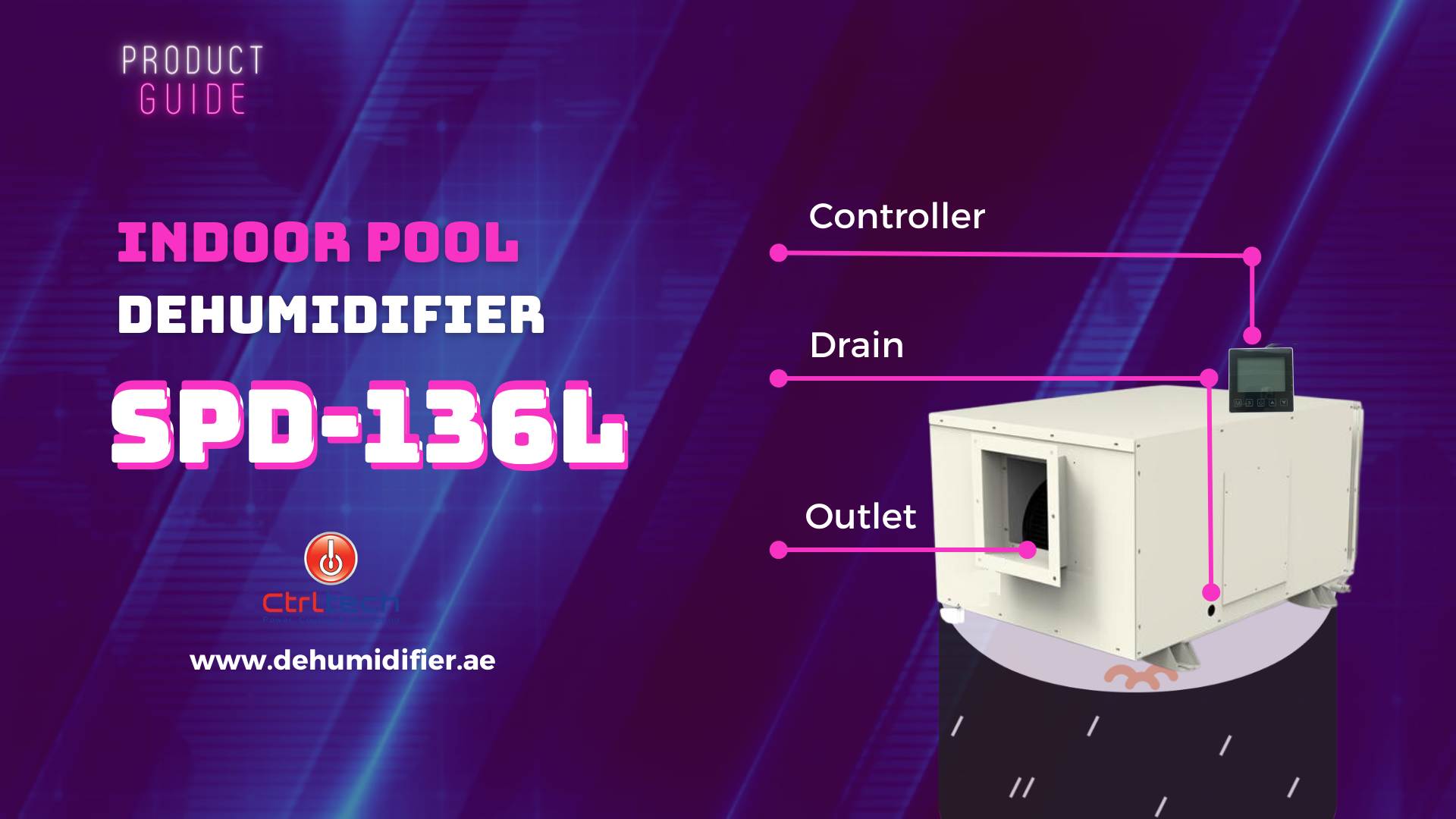
Though constructed for heavy-duty performance under a multiple array of conditions, and engineered to perform continuously for moderating humidity levels without fail, these units have quite a few potential drawbacks...
Potential noise: Due to their high airflow capacity, duct commercial dehumidifiers can sometimes produce noticeable noise levels. However, this can be mitigated by using a muffler kit designed to reduce sound emissions.
Higher costs: Compared to other types of dehumidification systems, ducted units tend to be more expensive. Their advanced features and larger capacity contribute to the higher price tag. It's important to consider this factor when budgeting for a dehumidification solution.
Limited flexibility: Once installed in the ductwork, the pool dehumidification system becomes a fixed component of the HVAC system. This means it may not be easily relocated or transferred to another part of the building if needed.
Dependency on HVAC systems: Inline dehumidification system for indoor pools rely on the operation of the HVAC system to function effectively. If the HVAC system is turned off or operates at a lower capacity, the dehumidifier's performance may be compromised.
Maintenance requirements: This machine require regular maintenance, including filter cleaning or replacement. Accessing and maintaining the unit may be more challenging due to its placement within the ductwork, requiring additional effort and time.
Energy consumption: Dehumidifiers for ductwork typically draw power from the HVAC system, which may increase overall energy consumption. This could result in higher utility costs, particularly if the dehumidification machine operates continuously or for extended periods.
Read more
A quick look at the installation options.
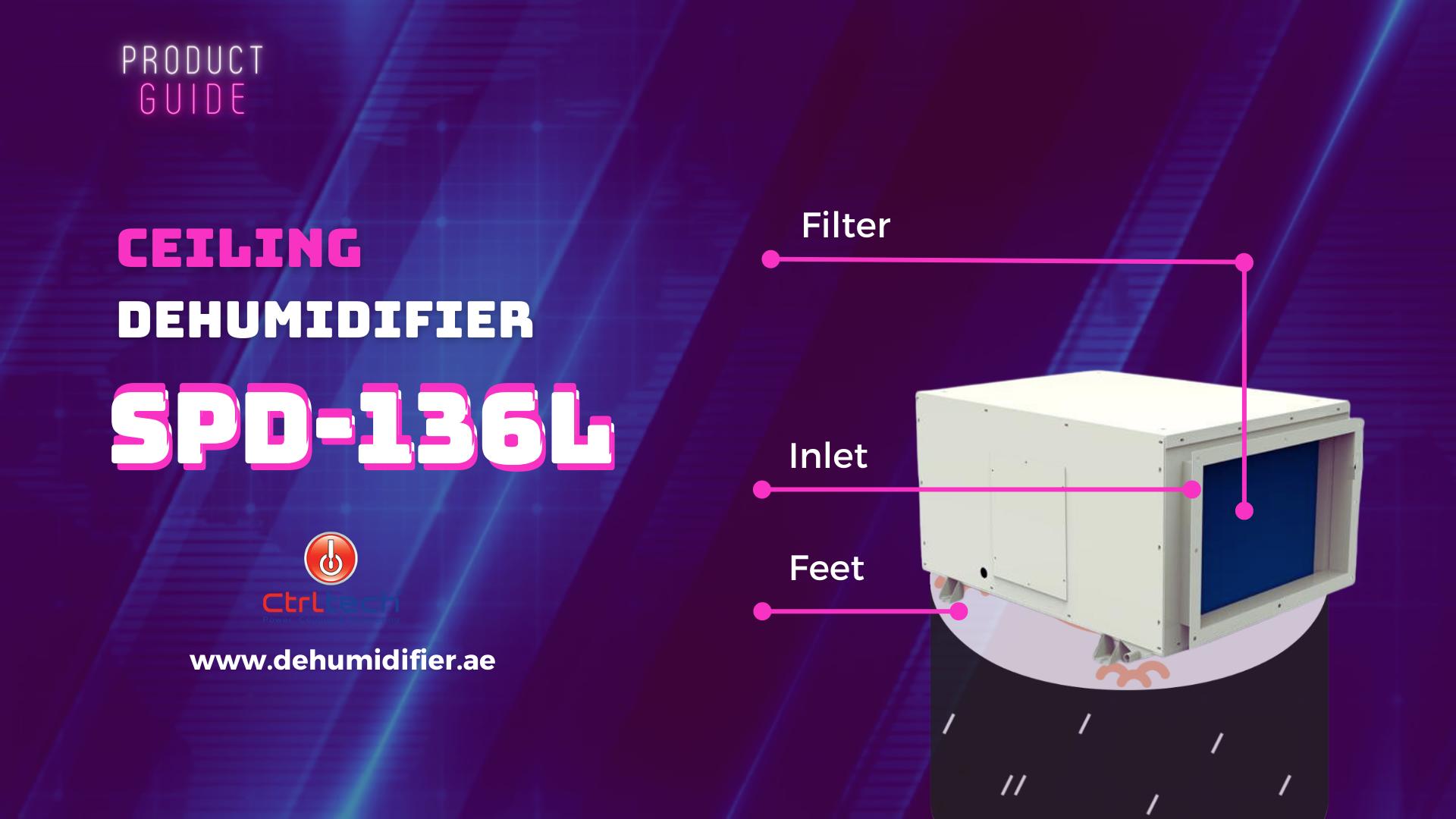
There are several installation options available for connecting a duct mount dehumidifier to an existing air conditioning system. Let's explore a few of them:
..
Inline installation.
In this configuration, the SPD-136L pool dehumidifier is installed in line with the central duct. By integrating it into the main supply or central return duct, 100% of the air passes through the dehumidifier machine consistently. This setup requires investing in a high-capacity unit capable of accommodating the entire airflow.
However, it is to be noted that if the air conditioner is not operational, the humidity remover unit will face pressure issues.
Parallel installation.
In this setup, the swimming pool dehumidifier is connected in parallel with one of the ducts. This means that humid air intake and dry air discharge occur within the same duct. To prevent reverse airflow, a damper is installed at the outlet. This installation method is commonly used when there is a shared duct system.
Cross installation.
With cross installation, the inline dehumidifier is placed between the supply and return ducts. It connects to the ducts through a cross-connection. The dehumidifier for indoor pools extracts moist air from the return duct and releases dry air into the same duct. Alternatively, it can be connected between the supply duct and a dedicated return. This installation method provides flexibility and allows for efficient dehumidification in various scenarios.
Independent connection.
The recommended installation method involves creating a separate supply and return duct for the ducted dehumidifier. This setup eliminates dependency on the air conditioning system. The unit draws air directly from the room and releases dry air back into the same space. This approach ensures continuous dehumidification, even when the AC is turned off during winter months. It offers added convenience and reliability.
Read more
